Disclosure: This article contains affiliate links. We may earn a commission from purchases at no extra cost to you, which helps our travel content.
The American West harbors technical marvels that rival their European counterparts, yet remain woefully underappreciated in our collective consciousness. Southern Idaho—particularly the Twin Falls region—represents a fascinating convergence of hydrological engineering, geological phenomena, and agricultural innovation that merits scholarly attention and family exploration alike. As someone who has documented infrastructure worldwide, I find Idaho's juxtaposition of rugged wilderness against human ingenuity particularly compelling. This carefully calibrated 7-day itinerary will guide your family through this remarkable landscape, whether you're piloting a sedan or commanding a recreational vehicle.
Preparing Your Vehicle and Equipment
Proper preparation constitutes the foundation of any successful expedition, particularly when traversing terrain as varied as Southern Idaho's. Prior to departure, I recommend a comprehensive vehicle inspection with particular attention to your cooling system—summer temperatures in this region regularly exceed 90°F (32°C), placing considerable demands on your engine.
For those traveling by RV, note that while most major routes accommodate larger vehicles comfortably, some scenic byways may present challenges for longer units. My colleague Dr. Jameson, who regularly traverses this region in his 30-foot Class C, swears by his backup camera system, which proves invaluable when navigating tight turns or unfamiliar campgrounds.
Regardless of your vehicle choice, a reliable GPS navigation system with offline mapping capabilities is essential. Cell service remains inconsistent throughout portions of this route, particularly in the more remote sections between Twin Falls and Craters of the Moon.

💡 Pro Tips
- Schedule a vehicle inspection at least two weeks before departure to allow time for any necessary repairs
- Download offline maps of Southern Idaho to your navigation device or smartphone
- Carry extra water and emergency supplies, even in summer months
Twin Falls: Engineering Marvels and Natural Wonders
Begin your expedition in Twin Falls, where the eponymous waterfalls once cascaded in magnificent twin columns before the construction of the Milner Dam in 1905. While the original falls exist now primarily in historical documentation, the area offers numerous hydrological features worthy of examination.
Shoshone Falls, often called the 'Niagara of the West,' presents an exceptional case study in natural power generation. At 212 feet, these falls exceed Niagara's height by approximately 45%, though with significantly reduced volume. Visit in early summer when snowmelt maximizes water flow. The juxtaposition of the adjacent hydroelectric facility against the raw power of the falls provides an excellent educational opportunity regarding renewable energy infrastructure for children.
The Perrine Bridge, spanning the Snake River Canyon, offers both an engineering case study and recreational spectacle. This truss arch structure extends 1,500 feet across the canyon, with a deck height of 486 feet. My last visit coincided with several BASE jumping demonstrations—the bridge represents one of the few structures in America where such activities are permitted year-round without permits. The technical precision required for successful deployment of aerodynamic deceleration devices (parachutes) from this fixed object provides fascinating parallels to my own skydiving experiences, albeit with significantly reduced margins for error.

💡 Pro Tips
- Visit Shoshone Falls before 11am to capture optimal lighting conditions for photography
- Allocate approximately 2-3 hours for the Shoshone Falls area to fully appreciate both the natural and engineered elements
- The Visitor Center beneath Perrine Bridge offers excellent contextual information on the canyon's formation and bridge construction methodology
Family-Friendly Camping and Accommodation Options
Southern Idaho offers a spectrum of accommodation options that satisfy both educational and recreational family requirements. For RV travelers, I recommend the Anderson Camp in Twin Falls as your initial base of operations. This establishment provides full hookups, adequate site spacing, and—most notably—a swimming pool that proves invaluable after days of geological exploration in summer heat.
For those traveling by car, the family camping setup provides efficient deployment capabilities at established campgrounds throughout the region. During my documentation of fermentation practices at a local cheese production facility last summer, I utilized this shelter system at Thousand Springs State Park with excellent results. The park's Billingsley Creek unit offers proximity to the remarkable springs emerging directly from canyon walls—a hydrogeological phenomenon worth detailed examination.
If indoor accommodations better suit your requirements, the portable travel router has proven essential for maintaining connectivity at various lodging establishments throughout the region, where WiFi infrastructure often proves inadequate for multiple device connections. This allows for evening research and educational content review after days of field exploration.

💡 Pro Tips
- Reserve RV sites at least 3 months in advance for summer travel, particularly for weekends
- Position tents on the north side of trees when possible to maximize morning shade duration
- Many campgrounds in this region have minimal natural shade; consider bringing additional shade structures for summer camping
Craters of the Moon: A Technical Marvel of Volcanic Engineering
Approximately 87 miles northeast of Twin Falls lies Craters of the Moon National Monument—a location I consider mandatory for any technically-minded family expedition. This vast basaltic lava field presents an exceptional opportunity to examine relatively recent volcanic activity, with formations dating primarily from 15,000 to 2,000 years before present.
The preservation of various flow structures, spatter cones, and lava tubes provides an unparalleled natural laboratory for understanding fluid dynamics in high-viscosity molten material. During my documentation visit last summer, I observed numerous families engaging with the Junior Ranger program, which effectively translates complex geological processes into accessible educational content.
For exploration of lava tubes such as Indian Tunnel, proper illumination proves essential. My headlamp provided adequate hands-free lighting while allowing detailed examination of ceiling formations and cooling patterns. The technical specifications of this device—particularly its beam distance and battery efficiency—make it suitable for both casual family exploration and more detailed scientific observation.
The 7-mile Loop Road provides vehicle access to primary features, though I strongly recommend allocating time for the Devil's Orchard Trail, which offers exceptional examples of pressure ridge formation and ecological succession patterns on relatively young volcanic substrates.
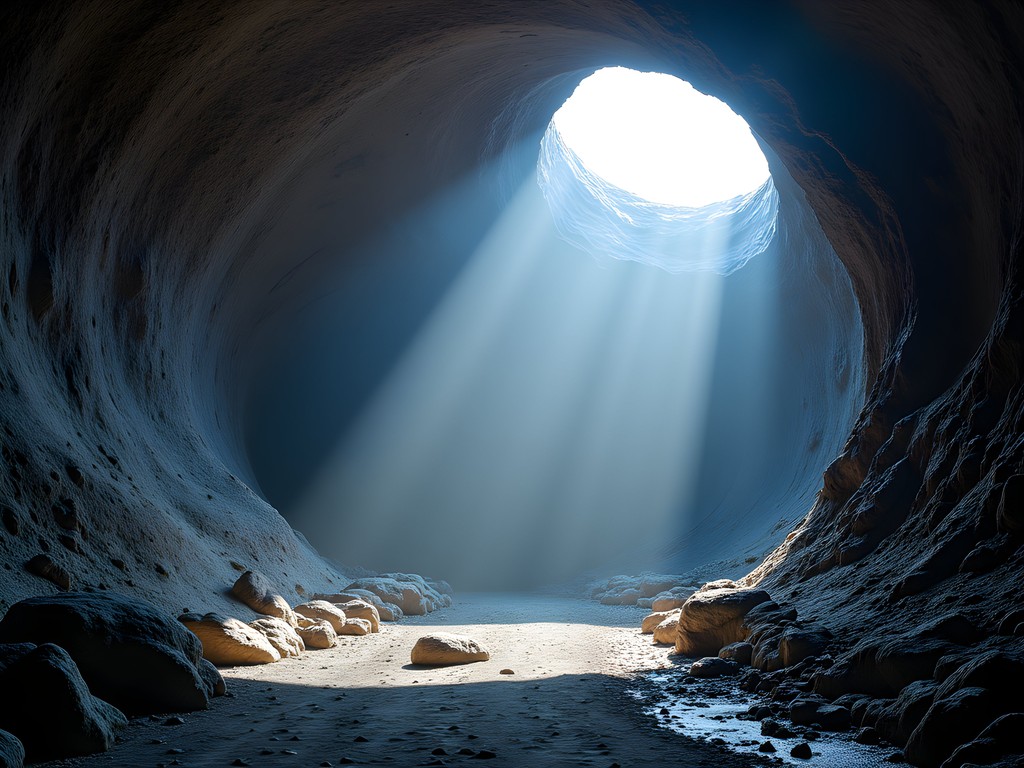
💡 Pro Tips
- Visit early morning or evening during summer to avoid extreme heat on the exposed black basalt surfaces
- Wear sturdy footwear with ankle support—the a'a lava fields feature extremely sharp, irregular surfaces
- Carry at least 1 liter of water per person, per hour of planned exploration
Hagerman Fossil Beds: Engineering Through Time
The Hagerman Fossil Beds National Monument presents a compelling chronological counterpoint to the relatively recent geological formations elsewhere on this itinerary. Located approximately 30 miles west of Twin Falls, this site contains the highest concentration of Hagerman Horse fossils in North America, dating to the Pliocene Epoch approximately 3.5 million years ago.
The technical aspects of paleontological excavation and preservation merit particular attention here. The visitor center's displays regarding matrix removal techniques and fossil stabilization methodologies provide excellent demonstrations of how engineering principles apply to historical preservation contexts.
For families with children interested in hands-on learning, I recommend bringing a field microscope to examine sediment samples from approved collection areas. During my documentation visit, I observed several children utilizing similar equipment to identify microfossils under ranger supervision—an excellent application of observational technology in educational contexts.
The Oregon Trail overlook within the monument also provides important historical engineering context, demonstrating how 19th-century travelers navigated this challenging landscape with period-appropriate technology and methodology. The juxtaposition of prehistoric horse fossils against the documented passage of actual horses through this same landscape during westward expansion creates a compelling educational narrative regarding transportation evolution.
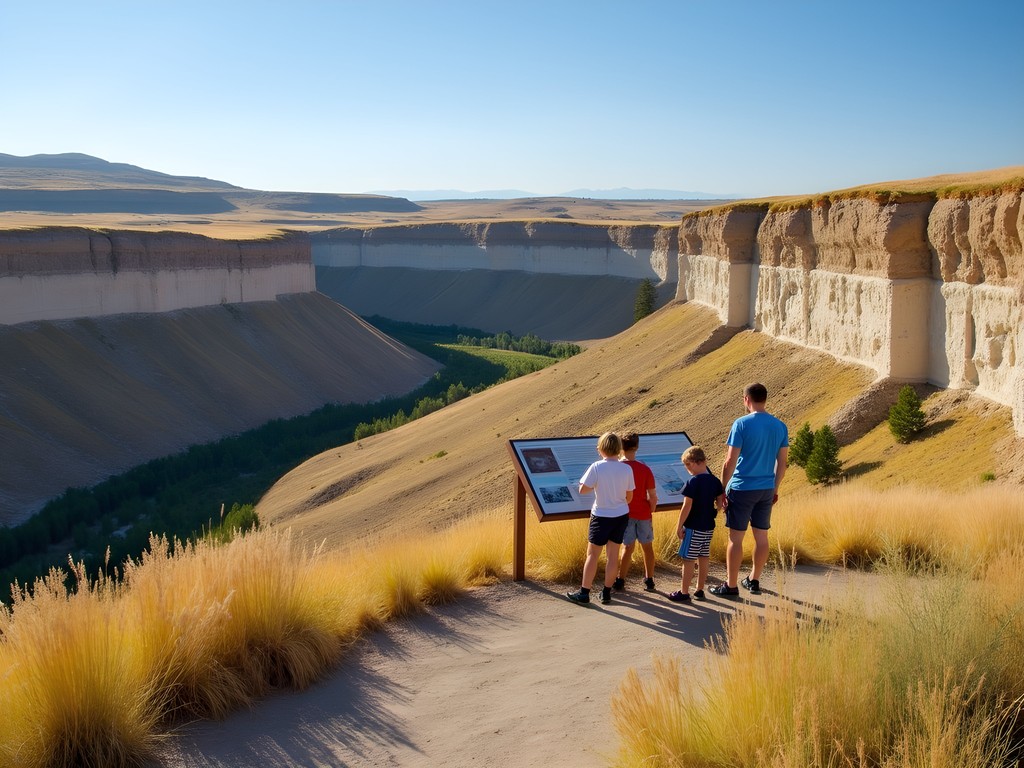
💡 Pro Tips
- The fossil beds themselves are primarily closed to public access; focus your visit on the excellent Visitor Center displays and designated viewpoints
- Morning visits offer optimal lighting conditions for photography of the dramatic erosional features
- Request the Junior Paleontologist program materials at the Visitor Center—they contain excellent technical content appropriate for various age ranges
Final Thoughts
Southern Idaho's technical and natural marvels offer families a remarkable educational opportunity disguised as a vacation. The integration of engineering principles—from prehistoric fossil formation to volcanic processes to modern hydroelectric infrastructure—provides a comprehensive timeline of both geological and human innovation. This region demonstrates how relatively modest infrastructure investment can render extraordinary natural features accessible while maintaining their fundamental character.
My documentation of this region has reinforced my conviction that American engineering heritage, particularly in our less-trafficked regions, deserves greater recognition in our educational curriculum. The technical literacy gained through hands-on examination of these sites—whether Shoshone Falls' hydroelectric systems or the natural fluid dynamics preserved at Craters of the Moon—offers valuable context for understanding both historical development and future sustainability challenges.
I encourage you to approach this itinerary not merely as a recreational endeavor but as a field expedition with significant educational potential. Document your observations, engage with interpretive resources, and consider how the engineering solutions—both natural and human—that you encounter might inform our approach to contemporary challenges. The landscapes of Southern Idaho have much to teach those willing to observe with technical precision.
✨ Key Takeaways
- Southern Idaho offers exceptional educational value regarding both natural processes and human engineering
- Summer travel requires careful preparation regarding vehicle cooling systems and personal hydration
- Many sites feature both recreational opportunities and technical interest points suitable for multi-generational engagement
- The region's volcanic, hydrological, and paleontological features provide an integrated timeline of Earth's engineering processes
📋 Practical Information
Best Time to Visit
Late May through early September, with June offering optimal water flow at falls
Budget Estimate
$1,200-2,000 for a family of four for one week (excluding vehicle/RV rental)
Recommended Duration
7 days minimum for comprehensive exploration
Difficulty Level
Moderate (Requires Some Hiking On Uneven Terrain)

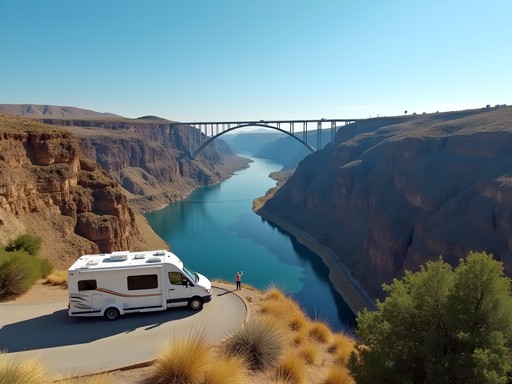
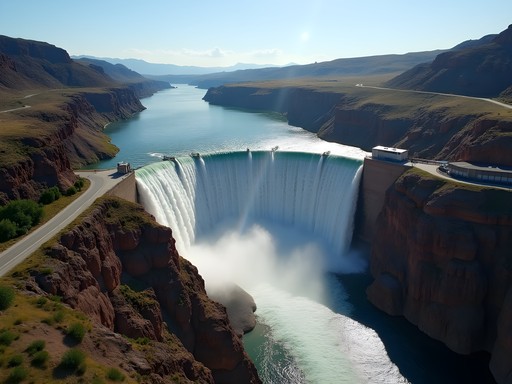









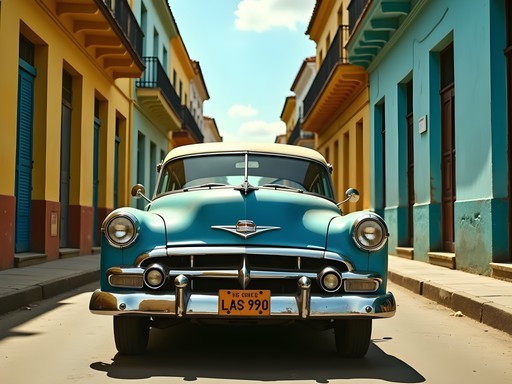



Comments
tripvibes
Planning this trip for May 2026. How's the weather then? Too early for camping?
Sage Dixon
May is actually perfect! Not too hot yet, spring wildflowers in bloom, and fewer crowds. Just bring layers as nights can still get chilly, especially at Craters of the Moon which sits at higher elevation.
globerider
Been to 42 countries and somehow missed Idaho. This convinced me to fix that mistake!
Fatima Sims
Astrid, your technical perspective on these natural wonders is so refreshing! I took my family through Southern Idaho last year and was blown away by how the engineering of Perrine Bridge contrasts with the raw power of the Snake River below. For families reading this - the visitor center has excellent educational materials that explain the geology in kid-friendly terms. We camped at Thousand Springs State Park and it was magical waking up to those cascades. One tip I'd add: the drive between Twin Falls and Craters of the Moon has limited services, so fill up on gas and snacks before heading out!
starmate
We did this exact route in our small RV last summer! For anyone planning this trip, I'd add that the KOA in Twin Falls was surprisingly nice with great amenities for families. When you visit Craters of the Moon, go EARLY in the morning - the heat reflecting off those black rocks in midday summer is no joke. Also, don't miss Balanced Rock south of Twin Falls. It's a quick detour but worth it for the photos. We used our compact binoculars to spot wildlife along the Snake River - saw bald eagles and osprey!
tripvibes
How was the cell reception out there? Planning to work remotely for part of our trip.
starmate
Pretty good around Twin Falls and main roads, but spotty at Craters of the Moon. I'd download offline maps before heading out!
dreamlegend
OMG those Craters of the Moon photos are STUNNING! Definitely adding this to my bucket list!
freeclimber
Just got back from Twin Falls last week! The Perrine Bridge was even more impressive than your photos show. We spent a whole day just watching base jumpers - my kids were absolutely mesmerized. The Snake River Canyon is seriously underrated compared to other western landmarks. Definitely agree that Shoshone Falls is worth the trip even in late season when the water flow is reduced.
Sage Dixon
Did you check out Dierkes Lake while you were there? It's my secret spot when the main attractions get crowded.
freeclimber
No! Totally missed that one. Adding it to the list for next time.
Nicole Russell
I've been to 42 states and Southern Idaho remains one of my favorite road trip discoveries! Astrid, you really captured the engineering marvel aspect that most blogs miss. Beyond Twin Falls, I'd add that the Thousand Springs area along the Snake River is stunning - you can literally see springs gushing out of canyon walls! For families, the Hagerman Fossil Beds are a hit with dinosaur-loving kids. One thing to note about RVing there - cell service can be spotty between attractions, so download offline maps. I was there in early September and the weather was perfect - warm days, cool nights. Can't wait to go back!
nomadmaster
Thousand Springs is on my list for next time! Did you do any kayaking there?
Nicole Russell
Yes! Rented kayaks at Banbury Hot Springs. Paddling with those springs flowing into the river was magical. Highly recommend!
travellegend
Pro tip: If you're going to Craters of the Moon, go super early morning or late afternoon. The black volcanic rock makes it HOT during midday, plus the light for photos is much better. And don't forget to stop at Atomic Burger in Arco on your way - best burgers in Idaho!
redclimber
If you're into hiking, don't miss Box Canyon Springs! It's a bit of a hidden gem - incredible blue water and not nearly as crowded as some of the more famous spots. The trail down is steep but manageable if you're reasonably fit. Worth it for the photos alone!
happyway
Thanks for this tip! Missed it on our trip but definitely adding it to the list for next time.
RVLifeCouple
Just completed this exact route in our Class C motorhome! The Perrine Bridge was even more impressive than we expected - we spent hours watching base jumpers. One thing to note about RVing in this region: the elevation changes are significant, so check your tire pressure regularly. We found the campground at Craters of the Moon to be perfect for mid-sized RVs, though water is limited so come prepared. The ranger programs there were outstanding - our favorites were the night sky tours (bring red-light headlamps!) and the volcanic formation walks. Twin Falls has excellent RV service facilities if you need them - we had a minor electrical issue fixed same-day.
Venture X
Premium card with 2X miles, $300 travel credit, Priority Pass